GatesAir contracted me to go to Utica, NY, and do some repair work. WKTV has a ULXTE-50 UHF transmitter which burned out an RF elbow between the UHF combiner in cabinet 1 and the UHF low pass filter for cabinet 1.
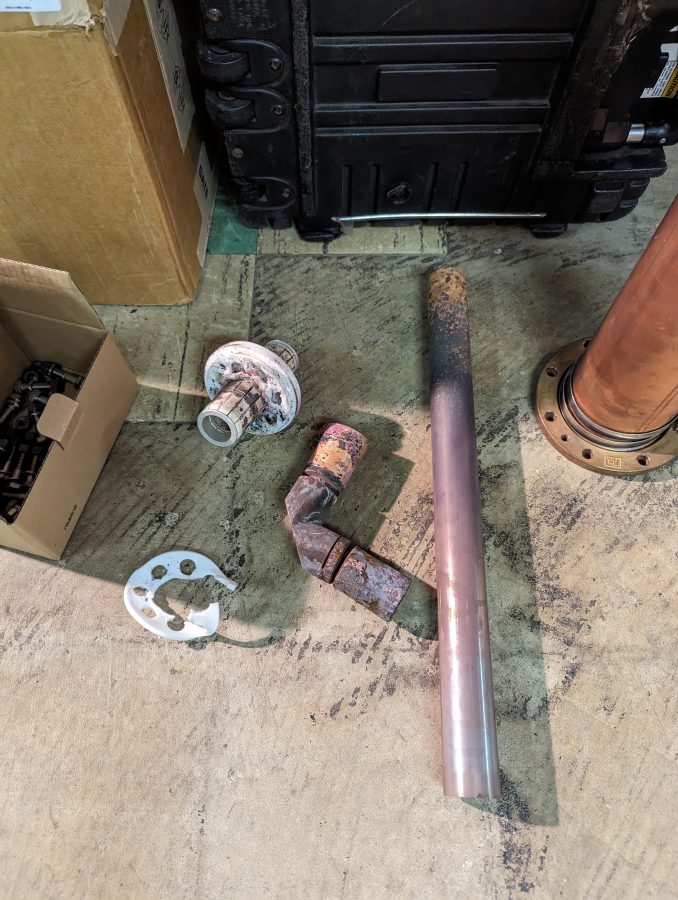
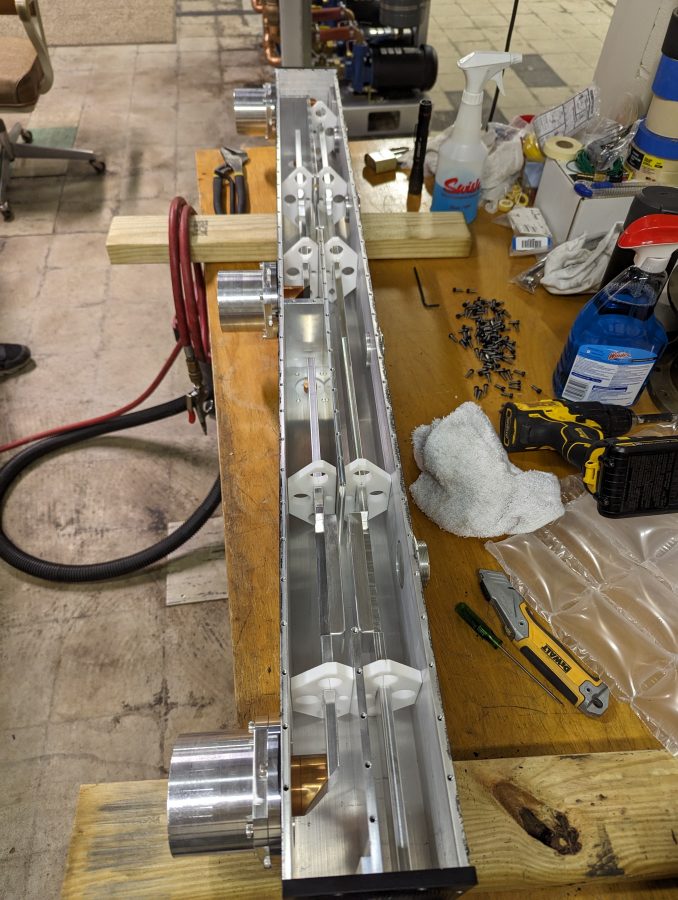
There was a bunch of burned debris in the bottom; little bits of melted metal and plastic.
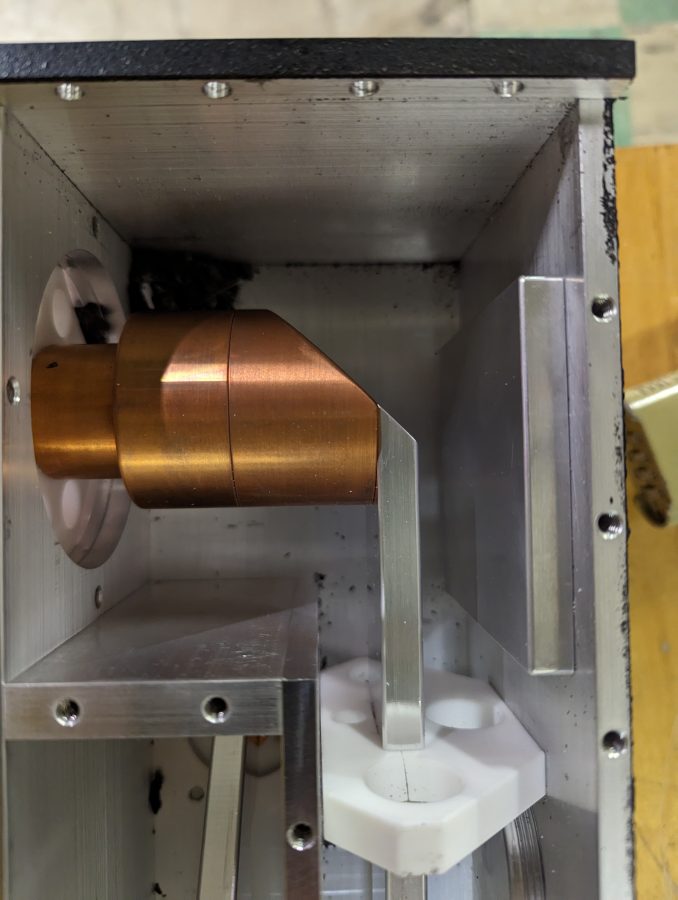
We first vacuumed out as much stuff as we could get. Then used an air compressor to blow the rest out and wiped everything down with clean rags and Windex.
Once that was done, the unit was reassembled and reinstalled in the transmitter. A new elbow, UHF low pass filter, and direction coupler were installed and the transmitter powered back up.
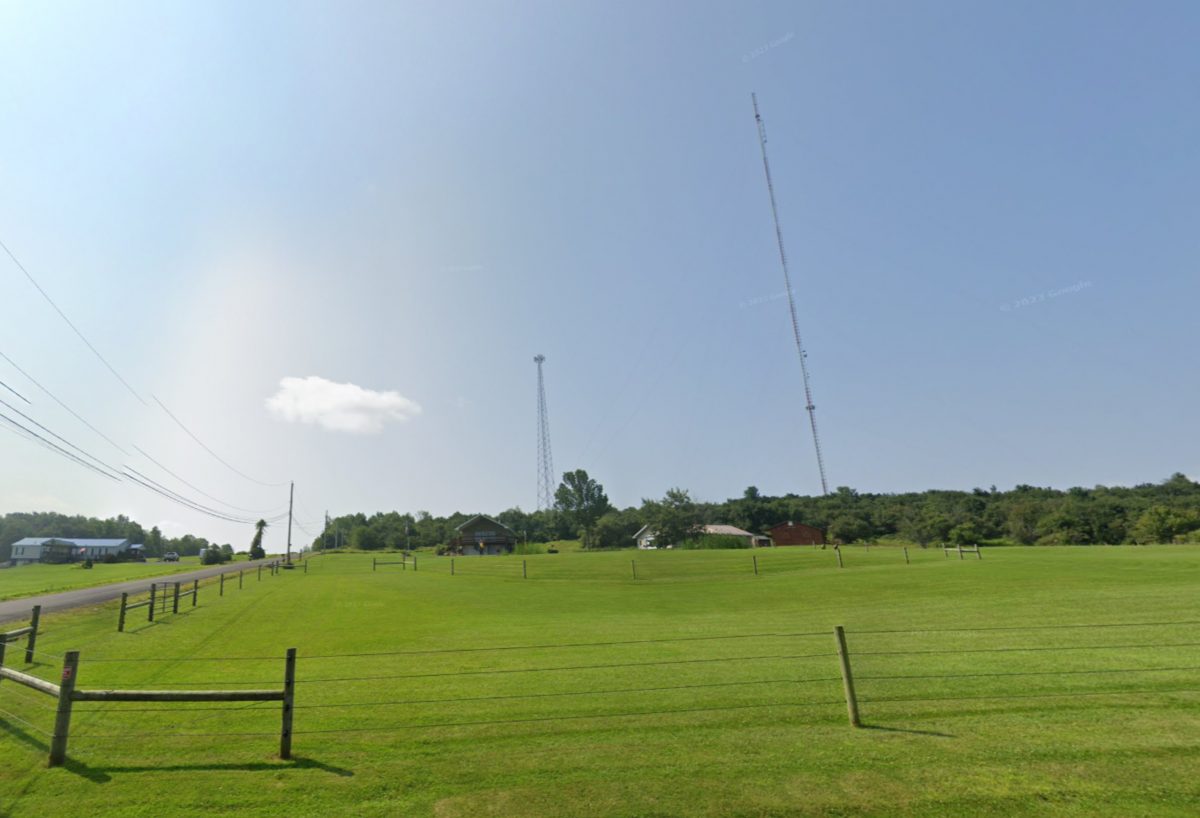
The transmitter site is actually located north and slightly west of Little Falls, NY. The station has been on the air since 1949 and the original GE transmitter is still in the garage. It was difficult to squeeze in and get a look at the transmitter, however, the operator’s console was out in the open:
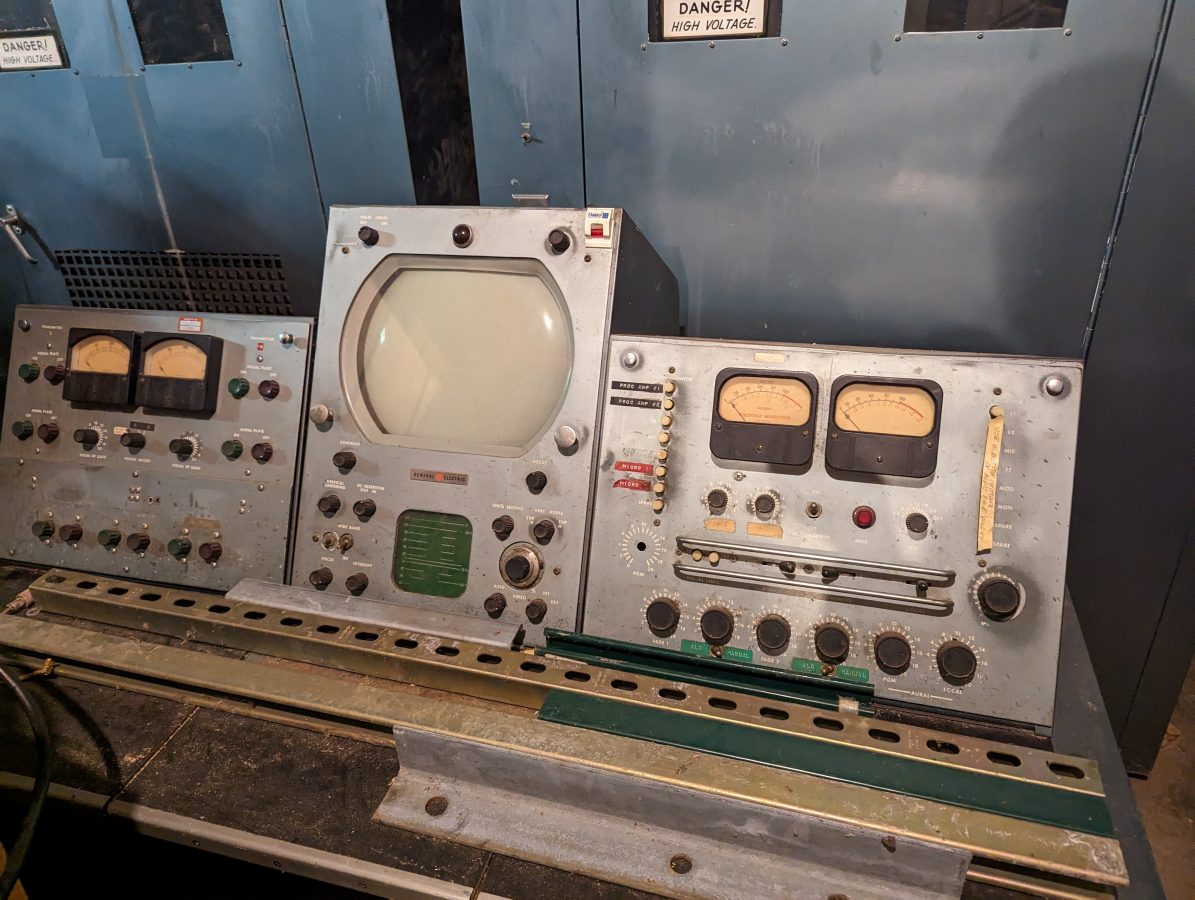
In most places, this would have been thrown out years ago. Now, it is a museum piece. Lots of interesting history in the Wikipedia article, too.

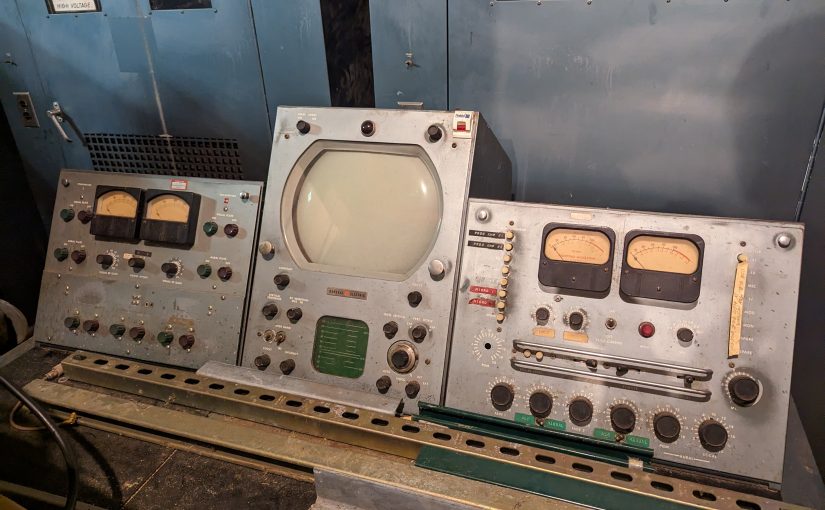


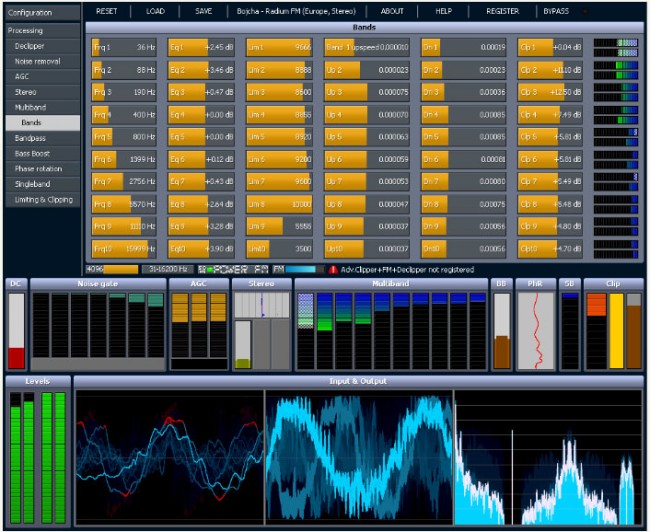

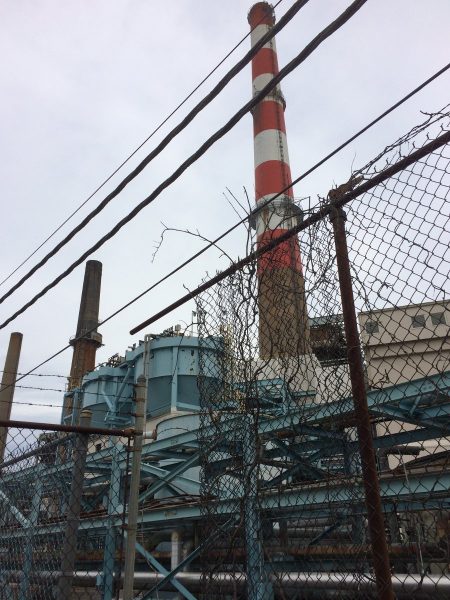
WKTV, man, that brings back memories! Was stationed at Griffiss AFB back in the 80’s, and CH 2 was the only TV signal I could even get marginally in my apartment on rabbit ears. WUTR was so snowy as to be unwatchable. Forced me to buy Rome Newchannels cable, $14 a month, big bux at the time.
Different story on the Finco outside antenna at WA2ZXS on base, we could get both at >5000 uV, and all the Syracuse stations too. WRGB came in OK if the conditions were right, from time to time WROC and WHEC too. Being on Skyline Hill helped.
Love that shot of the old Liverpool, NY-built GE transmitter in the garage on Smith Hill. GE always seemed (in those days) to favor round tube monitors with the double-D mask, while RCA liked the more rectangular mask. Always loved that shade of blue GE used back then, too.
So, what caused WKTV’s combiner burn-out?
Now, it is a museum piece.
Meanwhile it’s hiding in the morgue!
1 phone call to a former employee with “skills” would turn this important piece worthy of a very cool lobby display for the cost of paint and elbow grease.
Knowledgeable TV folk, please bear me for a moment:
This unit(right side panel)also functioned as a station’s main source switcher between networks, often long before the station actually had a proper studio in town. Yes, the transmitter staff often handled programming and associated logging functions all from this panel. It appears that this particular panel got a lot of use.
Some stations in NYC(at Empire) did much of their live/film program switching from similar panels.
Welcome back Paul!
Boise’s Ch 2 & Ch 7 had operators on top of the 7200′ mountain. They would switch networks on their common microwave system from Salt Lake City. Had to keep on top of it since tones were used on subcarriers for switching. Transmitter operators had to keep an eye on it. Occasionally those got noisy and would randomly switch feeds. If the studio STL went down we’d get to watch Salt Lake TV.
Your Boise story reminded me of something from my youth. First, to set the stage, the back story. Apologies for the length!
What is now KTAL-TV, Ch 6 in Shreveport was originally KCMC-TV in Texarkana, TX, a CBS affiliate. They had a studio and 390′ free standing tower (and all-GE gear be it noted) on Summerhill Rd. When KSLA (CBS) and KTBS (NBC) went on the air from Shreveport (1954/1955), and built their high-power 1500’+ transmitter plants out just south of Mooringsport, LA, it put KCMC at a disadvantage. KCMC was not viewable much south of Dixie, LA, and certainly not in Shreveport, the biggest market. And, now there were two CBS affiliates covering what would eventually be one market.
So, in 1961, KCMC built a 1500′ tower and moved their GE transmitter to a new transmitter site a bit north of the two Shreveport stations transmitters, near Vivian, LA. They also built a brand new studio on North Market in Shreveport. They changed callsign to KTAL (K-Tall, for the new tower, original, eh?), and picked up the NBC affiliation. KTBS swapped to full time ABC at that point. NBC network feed to the North Market studio was no problem, but they had to maintain a link to their Texarkana studio, as it was their city of license. So, two “flyswatters” on the new 1500′ Vivian tower, one for the Texarkana link, one for the Shreveport link. They had a transmitter console just like the picture above, and the transmitter op switched from Texarkana to Shreveport during every newscast as required.
However, there was one switch that didn’t happen quite right, sometime in the late 60’s. I was watching the news, waiting for something else to come on, and I heard “…and now, Joe Blitsfky with the news from Texarkana…”. Except, the transmitter op didn’t switch, and I got to see the crew in Shreveport resetting the news set for the next story, including an exclamation, “GET THAT @#%^ CAMERA OVER HERE, NOW!”. Well. Not long after, we joined the Texarkana studio, news already in progress…
WKTV’s operation at this site began in the late 1950’s when they moved from channel 13 at Smith Hill to channel 2 on the new taller tower. This relocation allowed WAST (originally WTRI) to drop in channel 13 in Albany, NY at Spruce Mt. near Corinth, NY. WAST started operation using WKTV’s channel 13 transmitters, also made by GE, and in 1963 moved them to Bald Mt. That transmitter had the same monitoring gear that is shown in Paul’s picture. At one point I learned that the console was designed by Frank Bias, who lived in the Syracuse area.
Those early GE VHF transmitters were vapor phase cooling. I’ve got an old RCA TM-5 master monitor in my basement.
The high band VHF WKTV transmitter used distilled water for cooling. The finals were a pair of GE 6251 tetrodes driven by an air cooled Machlett 7007. There was a second identical set-up for aural that eliminated the 6251s after the change from 25% aural to 10% aural. The 10 KW Aux transmitter also omitted the 6251s. When the hoses for the hot water failed, Bob Henry substituted a nylon garden hose. When a garden hose failed, I installed neoprene hoses designed for a truck’s cab heater.
Fred, I couldn’t get a good look at the front of the GE transmitter, didn’t WTEN have the same unit? I recall many years ago when Skeeter was there getting a quick tour of their building.
“So, what caused WKTV’s combiner burn-out?”
My guess is because the transmitter had “GatesAir” on the side. I don’t have a problem with GatesAir equipment but we had almost the exact same thing happen at KZJO-TV in Seattle with our new GatesAir Maxiva (IIRC) after we installed it due to being repacked. It both set itself on fire like this and also tried to drown itself but I don’t remember in what order. As far as I know it’s been fine since then, I don’t work for Fox anymore.
Actually, the burnout was in the elbow between the combiner and the low pass filter. We had to clean out the combiner because everything dropped down into it once it started arcing. GatesAir released a service bulletin for these transmitters; apparently, the screws on the top of the UHF combiners loosen up over time and cause burnouts. I did note a few screws on the top plate were less tight than others, but not loose. I checked all of the other combiners.
I can say my experience with GatesAir products has been pretty good. One or two cases of infant mortality, an issue with a software update, etc. I would rate them higher than some other well-known transmitter manufacturers.
Yes Paul; WTEN’s old GE analog transmitter was identical to WAST’s. WTEN had no backup transmitter until they put in the RCA F line as a main transmitter.